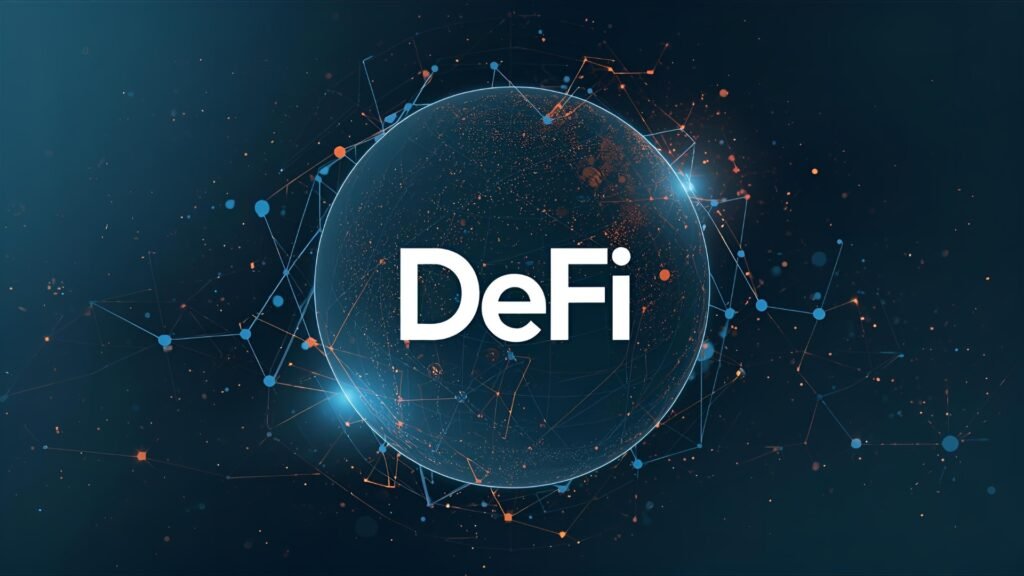Decentralized finance has raced from niche experiment to a multi-billion-dollar marketplace in just a few years, but two pain points still slow mainstream adoption: complexity and access. Pendle, a protocol known for Pendle and Plasma and fixed-rate strategies, has helped simplify the way people capture and manage returns. Plasma, a next-gen, stablecoin-native ecosystem working toward global payments and “digital banking” experiences, focuses on making those returns easy to reach for everyday users and institutions alike. Put them together, and you get a clear ambition.
This collaboration aims to merge Pendle’s yield markets with Plasma’s user-friendly rails to widen access to curated on-chain income products—particularly stablecoin yields and principal-token strategies—while preserving self-custody, transparency, and interoperability. The timing is notable: Pendle has surged among the largest DeFi protocols by total value locked (TVL),
Reflecting the broad demand for predictable, composable on-chain income. Recent reports put Pendle’s TVL in the multi-billion-dollar range, underscoring investor confidence in its model. Meanwhile, Plasma has set out its stall as a high-performance, EVM-compatible network designed for stablecoin payments and DeFi at scale, positioning itself as an accessible on-ramp for yield products.
The players: Pendle and Plasma in context
What Pendle brings: tokenized yields and fixed-rate opportunities
Pendle pioneered a clean way to trade and manage yield: it tokenizes future yield into tradable assets. Users deposit yield-bearing tokens (like stETH, sUSDe, or LP tokens) and receive two pieces:
-
A Principal Token (PT) representing the underlying principal.
-
A Yield Token (YT) representing the stream of future yield until maturity.
By splitting yield from principal, DeFi users can lock in fixed returns, speculate on yield, or build hedged positions. Over time, Pendle integrated with a broad set of protocols and assets, and its ecosystem has expanded into billions of dollars of TVL, reflecting persistent interest in fixed-income-style DeFi. Recent coverage notes Pendle among the largest DeFi protocols by TVL, a sign of durable product-market fit..
Why this matters for mainstream DeFi: Fixed-rate or predictable yield instruments are familiar to traditional investors. By offering transparent, on-chain versions of bond-like returns, Pendle lowers the psychological barrier for newcomers who want clearer risk/return profiles than typical variable-rate DeFi.
What Plasma brings: stablecoin-first rails and a banking-like UX
Plasma positions itself as a high-throughput, EVM-compatible Layer-1 focused on stablecoin payments and DeFi usability, with a goal to make global digital banking experiences feel intuitive while staying non-custodial. That means low fees, instant transfers, and an experience designed around the most widely used building block in DeFi: stablecoins.
Third-party write-ups have also highlighted Plasma’s integrations with leading stablecoin infrastructure and major DeFi money markets, a sign that its approach centers on deep liquidity, familiar assets, and institutional-grade tooling. Some coverage has specifically pointed to USDe and sUSDe support as foundational components, with Pendle integrations “coming soon”—a glimpse of the complementary fit between the two teams.
Why this matters for mainstream DeFi: Many users want simple, stablecoin-denominated returns delivered through a familiar interface. Plasma’s “digital bank” framing and EVM compatibility help to package sophisticated DeFi strategies into tap-to-use experiences without sacrificing transparency.
The partnership thesis: accessible yield for a global audience

Expanding distribution for tokenized yield
The core idea of “Pendle and Plasma team up to expand global DeFi” is distribution. Pendle’s tokenized yield markets have gained traction among power users; Plasma provides banking-like UX and payment rails that can bring those same markets to a broader audience. The result is a funnel where stablecoin users can discover, compare, and allocate to curated yield strategies—fixed-rate PTs, variable YTs, or balanced portfolios—inside a streamlined interface.
A recent industry post framed this direction as Pendle bringing high-yield DeFi opportunities into a Plasma “digital bank” experience, including multiple markets designed to make yield selection feel straightforward. While details evolve, the theme is clear: user-friendly packaging layered on top of proven DeFi primitives.
Deepening the stablecoin stack
Plasma’s stablecoin-first design dovetails neatly with Pendle’s most popular markets, many of which center on yield-bearing stablecoin strategies. External coverage of Plasma’s mainnet highlights the priority placed on stablecoin liquidity, integrations with money markets and DEXs, and native support for leading synthetic dollars—exactly the kind of infrastructure that supercharges Pendle markets and keeps slippage and costs low for users chasing on-chain income.
As stablecoin yields continue to attract both retail and institutions, tokenized-yield instruments (like PT-sUSDe) offer transparent, composable paths to fixed returns—useful for treasuries, neobanks, fintechs, and DAOs that need predictable, dollar-denominated income. Coverage over recent months has repeatedly noted the rise of USDe/sUSDe integrations and looping Pendle and Plasma, with Pendle often at the center of that growth.
How the stack could work for users
On-ramp: stablecoins and identity
A user on Plasma acquires or bridges stablecoins (USDT, USDC, USDe, or others), completes any compliance/attestation required by their locale or platform partner, and lands in a dashboard that surfaces risk-labeled options: fixed-rate, variable-rate, or structured strategies built from Pendle PT/YT markets.
Allocation: picking a yield path
-
Fixed-rate with PTs: The user purchases Principal Tokens that mature on a known date, using yields derived from integrated markets. This replicates the feel of a time-bound deposit with on-chain transparency and composability.
-
Variable yield with YTs: The user buys Yield Tokens to gain exposure to the future yield stream. If yields rise, the YT appreciates; if yields fall, it can underperform. More risk, more potential upside.
-
Balanced or hedged strategies: The user combines PTs and YTs (or uses structured vaults) to target a yield band while limiting drawdowns, often rebalancing over time.
Management: insights, automation, and exits
Inside Plasma’s interface, the user sees APY ranges, maturity dates, and historical performance. Over time, they may automate rolls into the next maturity, hedge exposures, or use liquidity pools to enter/exit positions with minimal friction. With Pendle’s transparent math and Plasma’s banking-like UX, both novice and advanced users can navigate yield without juggling half a dozen dApps.
Also Read: Pendle Crypto News: Navigating Yield Tokenization in DeFi
What builders and institutions stand to gain

Composability for fintechs and neobanks
Fintechs can embed stablecoin yields through tokenized positions rather than bespoke yield “black boxes.” By using PTs under the hood, a neobank can present a fixed APY for a fixed term, backed by on-chain collateral and observable markets. This Pendle and Plasma streamlines audits and lets compliance teams trace flows end-to-end.
Treasury strategies for DAOs and enterprises
DAOs and corporate treasuries can ladder maturities (buying PTs that mature in different months/quarters) to smooth cash flows—very similar to bond ladders in TradFi—while keeping assets self-custodied. In volatile markets, they can rotate into shorter maturities or increase stablecoin allocation to preserve runway.
New rails for cross-border payments
Because Plasma emphasizes instant, low-fee stablecoin transfers, treasuries can disburse earnings or fund subsidiaries in minutes, then park liquidity in Pendle and Plasma strategies during idle periods. That blend—payments + yield—is attractive for any multi-entity org that wants capital efficiency without surrendering control.
Risk, transparency, and good habits
Smart contract and integration risk
All DeFi carries smart-contract risk. The best practice is to review audits, monitor bug bounty programs, and keep position sizes appropriate for your risk tolerance. Pendle publishes documentation about its market mechanics and has undergone multiple audits; still, risk never falls to zero. Plasma’s integrations multiply utility, but also create interdependency risk when multiple protocols are stacked.
Market and liquidity risk
Variable yields can move with market conditions; YT prices reflect those expectations. Fixed-rate PTs will trade at market discounts/premiums to their redemption value depending on time to maturity and prevailing yields. In thinner markets, expect wider spreads. The presence of deep stablecoin liquidity—a focus area in Plasma’s ecosystem—helps minimize frictions for everyday users.
Operational best practices
Use segregated wallets for strategy buckets, enable hardware-wallet approvals, and set allowance caps. For institutions, implement multi-sig policies, role-based approvals, and real-time monitoring of exposures. When possible, stage entries across days/weeks rather than going all-in at once.
The broader DeFi backdrop: why yields lead adoption
The next wave of DeFi adoption is likely to be utility-first: payments that settle instantly and dollar-based yields that feel familiar to mainstream users. That is exactly where Pendle and Plasma overlap. With Pendle’s tokenized yields and Plasma’s stablecoin rails, there’s a credible route to bank-like experiences that are non-custodial, transparent, and global.
It also helps that Pendle’s footprint keeps expanding—from integrations with major assets and money markets to partnerships across the crypto stack—signaling robust demand for fixed-income-style DeFi. Media and data outlets have chronicled Pendle’s rapid TVL growth and ecosystem momentum across 2024–2025. On the other side, Plasma’s positioning as an EVM-compatible, stablecoin-native chain creates a natural venue for packaging and distributing yield products to everyday users.
What to watch next
Product rollout and supported assets
Look for which stablecoins and liquid-staking assets appear first in Pendle-on-Plasma markets, and how maturity schedules are arranged. Coverage has hinted at multiple markets designed to “unlock new earning opportunities,” a sign we’ll see tiered risk/term options rather than a one-size-fits-all approach.
Liquidity incentives and points
DeFi launches often include liquidity mining, fee rebates, or points programs to jumpstart activity. With stablecoins at the center, the cost of capital and depth of order books will determine how attractive these markets feel in practice.
Institutional access and compliance
Finally, watch for custody integrations, KYB/KYC pathways, and reporting features built for institutions. If Plasma’s digital-banking UX lands with compliance teams while Pendle’s instruments satisfy treasury committees seeking predictability, the addressable market could widen quickly.
Conclusion
The message behind the headline Pendle and Plasma Up to Expand Global DeFi” is simple but powerful: make sophisticated yield simple to use. Pendle contributes the tokenized-yield engine that powers fixed-rate and variable-rate strategies. Plasma contributes stablecoin-first rails and a banking-like interface that can deliver those strategies to anyone with a smartphone and an internet connection. If executed carefully—pairing strong risk controls with deep liquidity—this partnership can push DeFi one step closer to the mainstream by merging transparency, access, and usability.
FAQs
What exactly does Pendle do, in simple terms?
Pendle splits yield from principal. When you deposit a yield-bearing asset, Pendle issues a Principal Token (PT) and a Pendle and Plasma. PTs give you predictable, fixed-rate-style returns at maturity, while YTs give you exposure to variable yield until that maturity. This lets you choose stable returns, higher-risk upside, or a balanced mix—all on-chain.
How does Plasma make DeFi more accessible?
Plasma focuses on stablecoin-native, EVM-compatible rails with low fees and instant transfers. It wraps complex DeFi actions in a banking-like interface so users can discover, buy, and manage tokenized-yield positions without juggling multiple dApps or sacrificing self-custody.
Is this only for crypto-native users or can newcomers benefit?
Newcomers benefit directly. The combination of stablecoin balances, clear APY displays, and time-bound PT maturities makes the experience feel familiar—more like fixed deposits or bonds—but with on-chain transparency and composability. Plasma’s UX is designed to lower the learning curve for first-time DeFi participants.
What are the main risks with Pendle-style yields?
Risks include smart-contract risk, market/liquidity risk, and integration risk when multiple protocols are stacked. Variable yields can change with market conditions, and PT prices can move before maturity as rates shift. Best practices: diversify, size positions conservatively, and use Pendle and Plasma and multi-sig policies for larger treasuries.
Why are stablecoins central to this collaboration?
Stablecoins are the unit of account for much of DeFi. They reduce volatility for on-chain finance and make yields easier to understand. Plasma’s stablecoin-first design plus Pendle’s tokenized-yield strategies creates an approachable pathway to dollar-denominated returns that can scale across borders.

